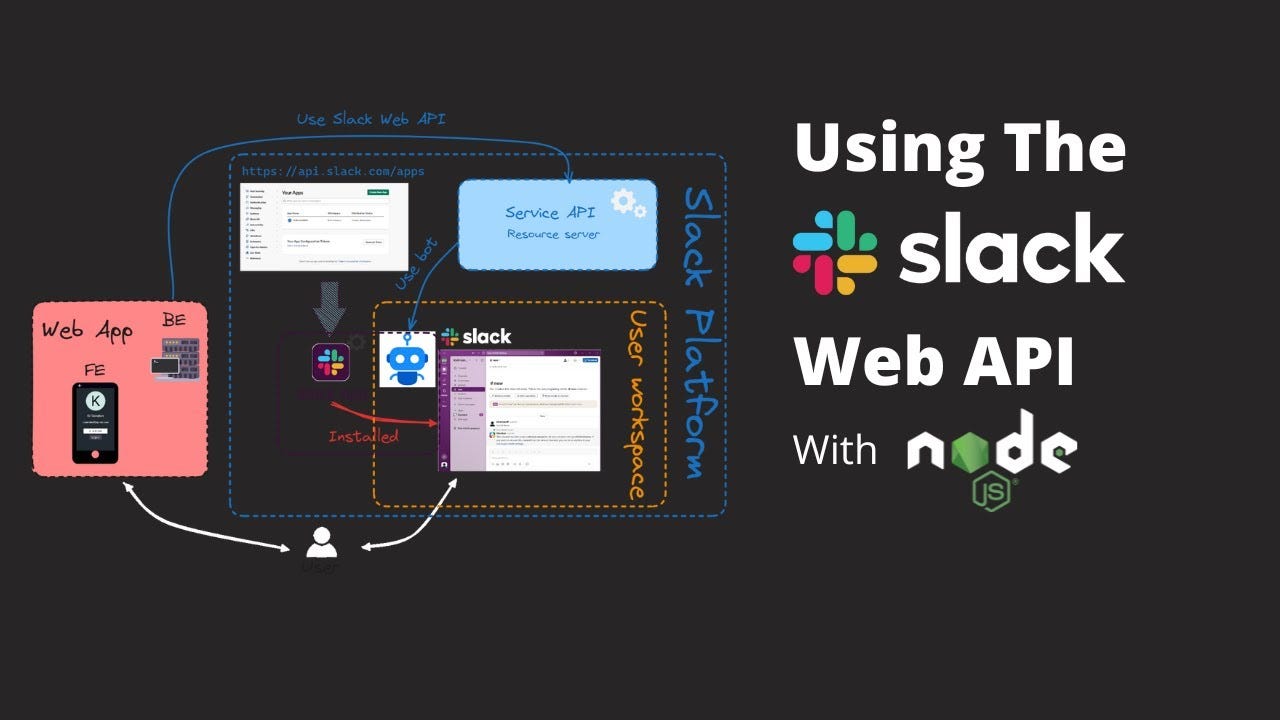Reusable Node Code Modules, Part 7 - Notifications - Slack
Streamlined Communication: Building Reusable Slack Notification Modules
Slack notifications are crucial for real-time communication and alerts within development teams. Implementing a reusable Slack notification module ensures consistent message handling across projects. This guide covers how to structure reusable Slack notification modules in Node.js using Express, manage notifications efficiently, and integrate common libraries
Common Libraries and Tools
1. Slack Web API
The Slack Web API allows you to build applications that interact with Slack in a variety of ways, including sending messages to channels, uploading files, and more.
Key Features
Rich Interactions: Supports sending messages, posting updates, and interacting with Slack's rich UI components
Web API Methods: Provides a wide range of methods for interacting with Slack
Scalability: Handles large volumes of notifications
Security: OAuth 2.0 for secure authentication and permissions
2. Slack Node SDK
The Slack Node SDK is a comprehensive toolset for building Slack apps in Node.js
Key Features
Comprehensive SDK: Includes Web API, Events API, and Real-Time Messaging API
TypeScript Support: Full support for TypeScript
Rich Interactions: Supports interactive messages and dialogs
Middleware Support: Integrates well with Express and other middleware frameworks
3. Axios
Axios is a promise-based HTTP client for Node.js and the browser. It can be used to interact with Slack's API endpoints
Key Features
Promise-Based: Supports promises and async/await syntax
Interceptors: Provides request and response interceptors
Error Handling: Rich error handling and response transformation
Lightweight: Minimal footprint and easy to configure
4. Request
Request is a simple, human-friendly HTTP client for Node.js, also suitable for interacting with Slack's API
Key Features
Simple API: Easy-to-use API for making HTTP requests
Streaming: Supports streaming for large payloads
Form Data: Simplifies working with form data
Proxy Support: Built-in support for HTTP proxies
Comparison
Slack Web API: Best for comprehensive interaction with Slack, providing full support for Slack's features
Slack Node SDK: Ideal for building full-featured Slack apps with TypeScript support and middleware integration
Axios: Suitable for lightweight HTTP requests with robust promise support and interceptors
Request: Best for simple HTTP requests with an easy-to-use API and support for streaming
Examples and Wrapper Class
Example 1: Slack Web API
Setup:
$ npm install @slack/web-apiConfiguration:
import { WebClient } from '@slack/web-api';
const token = 'your-slack-bot-token';
const web = new WebClient(token);
const sendSlackMessage = async (channel, text) => {
try {
await web.chat.postMessage({
channel,
text
});
console.log('Message sent successfully');
} catch (error) {
console.error('Error sending message:', error);
}
};
export default sendSlackMessage;Wrapper Class:
class SlackClient {
constructor() {
this.web = new WebClient(token);
}
async sendMessage(channel, text) {
try {
await this.web.chat.postMessage({ channel, text });
console.log('Message sent successfully');
} catch (error) {
console.error('Error sending message:', error);
}
}
}
export default new SlackClient();Example 2: Slack Node SDK
Setup:
$ npm install @slack/boltConfiguration:
import { App } from '@slack/bolt';
const app = new App({
token: 'your-slack-bot-token',
signingSecret: 'your-signing-secret'
});
const sendSlackMessage = async (channel, text) => {
try {
await app.client.chat.postMessage({
channel,
text
});
console.log('Message sent successfully');
} catch (error) {
console.error('Error sending message:', error);
}
};
export default sendSlackMessage;Wrapper Class:
class SlackSDKClient {
constructor() {
this.app = new App({
token: 'your-slack-bot-token',
signingSecret: 'your-signing-secret'
});
}
async sendMessage(channel, text) {
try {
await this.app.client.chat.postMessage({ channel, text });
console.log('Message sent successfully');
} catch (error) {
console.error('Error sending message:', error);
}
}
}
export default new SlackSDKClient();Example 3: Axios
Setup:
$ npm install axiosConfiguration:
import axios from 'axios';
const token = 'your-slack-bot-token';
const sendSlackMessage = async (channel, text) => {
try {
await axios.post('https://slack.com/api/chat.postMessage', {
channel,
text
}, {
headers: {
'Authorization': `Bearer ${token}`,
'Content-Type': 'application/json'
}
});
console.log('Message sent successfully');
} catch (error) {
console.error('Error sending message:', error);
}
};
export default sendSlackMessage;Wrapper Class:
class AxiosSlackClient {
constructor() {
this.token = 'your-slack-bot-token';
this.axiosInstance = axios.create({
baseURL: 'https://slack.com/api',
headers: {
'Authorization': `Bearer ${this.token}`,
'Content-Type': 'application/json'
}
});
}
async sendMessage(channel, text) {
try {
await this.axiosInstance.post('/chat.postMessage', { channel, text });
console.log('Message sent successfully');
} catch (error) {
console.error('Error sending message:', error);
}
}
}
export default new AxiosSlackClient();Example 4: Request
Setup:
$ npm install requestConfiguration:
import request from 'request';
const token = 'your-slack-bot-token';
const sendSlackMessage = (channel, text) => {
const options = {
url: 'https://slack.com/api/chat.postMessage',
method: 'POST',
headers: {
'Authorization': `Bearer ${token}`,
'Content-Type': 'application/json'
},
json: {
channel,
text
}
};
request(options, (error, response, body) => {
if (error) {
console.error('Error sending message:', error);
} else if (body.error) {
console.error('Slack API error:', body.error);
} else {
console.log('Message sent successfully');
}
});
};
export default sendSlackMessage;Wrapper Class:
class RequestSlackClient {
constructor() {
this.token = 'your-slack-bot-token';
}
sendMessage(channel, text) {
const options = {
url: 'https://slack.com/api/chat.postMessage',
method: 'POST',
headers: {
'Authorization': `Bearer ${this.token}`,
'Content-Type': 'application/json'
},
json: {
channel,
text
}
};
request(options, (error, response, body) => {
if (error) {
console.error('Error sending message:', error);
} else if (body.error) {
console.error('Slack API error:', body.error);
} else {
console.log('Message sent successfully');
}
});
}
}
export default new RequestSlackClient();

